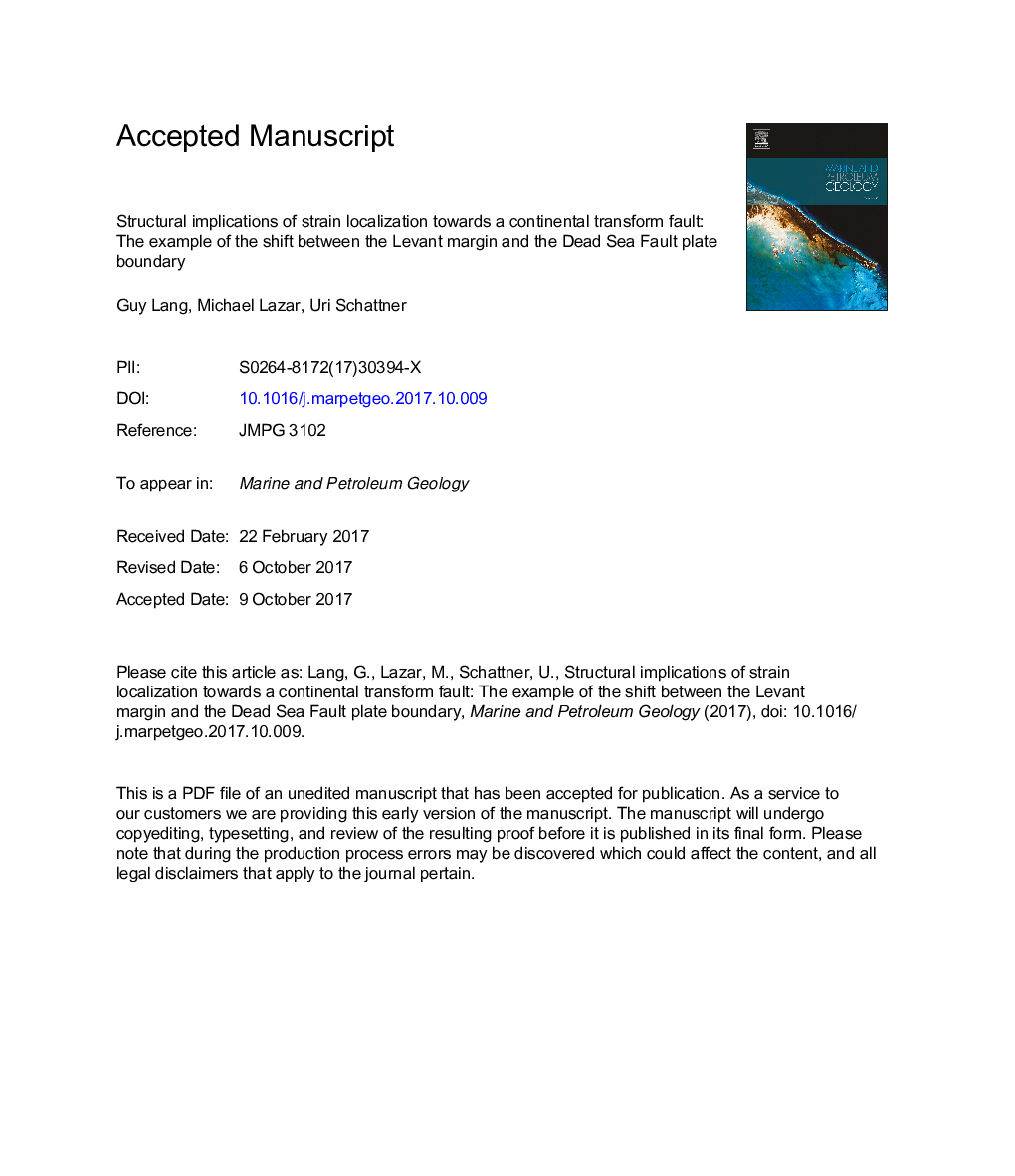| کد مقاله | کد نشریه | سال انتشار | مقاله انگلیسی | نسخه تمام متن |
|---|---|---|---|---|
| 8909285 | 1637137 | 2018 | 52 صفحه PDF | دانلود رایگان |
عنوان انگلیسی مقاله ISI
Structural implications of strain localization towards a continental transform fault: The example of the shift between the Levant margin and the Dead Sea Fault plate boundary
ترجمه فارسی عنوان
پیامدهای ساختاری موضع کرنش نسبت به خطای تغییر قاره: مثال تغییر بین حاشیه لوانت و مرز ورقه گسل دریای مرده
دانلود مقاله + سفارش ترجمه
دانلود مقاله ISI انگلیسی
رایگان برای ایرانیان
کلمات کلیدی
چینه شناسی لرزه ای، رکورد حاشیه قاره، محلی سازی فشار، مرز بشقاب را تغییر دهید حاشیه قاره حاشیه، گسل دریای مرده
موضوعات مرتبط
مهندسی و علوم پایه
علوم زمین و سیارات
زمین شناسی اقتصادی
چکیده انگلیسی
Continental transform faults accommodate lateral motion between two adjacent plates. Often, evidence for such motion is hard to detect due to onland processes of erosion. Investigation of a submerged passive continental margin adjacent to a transform plate boundary might provide indications for the developmental stages of the transform. To examine this hypothesis, we analyzed the Messinian-to-recent stratigraphy and structure of the Levant continental margin that resides ca. 100Â km from the Dead Sea fault (DSF) continental transform. The analysis is based on interpretation of seismic reflection data (2D and 3D time migrated, and pre-stack 3D depth migrated) and four boreholes. It includes construction of structural maps, tracking of stacking patterns and calculations of sedimentation rates. Data show that the Levant margin developed through three phases: (1) Late Miocene-Earliest Zanclean (â¼6-â¼5 Ma) NNE-SSW left lateral strike-slip faulting (2) Zanclean-Late Gelasian (â¼5-1.8 Ma) syn-depositional folding striking in the same direction. The top Gelasian surface marks an abrupt change, which is expressed as (3) mass slumping that occurred due to regional basinward tilt. Continuation of differential subsidence is manifested by Calabrian-to-recent progradation (1.8-0 Ma). While Nile sediment flux peaked at 1.8 Ma and decreased during the Calabrian-to-recent, our data shows an increase in sedimentation on the Levant margin throughout the entire Plio-Pleistocene. This discrepancy is caused by the regional tilting of phase 3, which shifted the depocenter to the west. Correlations to onshore findings suggest that the faulting, folding and tilting observed on the continental margin represent localization of strain towards the DSF during the Pliocene-Gelasian (5.3-1.8 Ma). This is attributed to the consequent deepening of the DSF and the incipient collision of the Eratosthenes Seamount with the Cyprus Arc. The continental margin records the development of the nearby active transform through structural and sedimentary modifications.
ناشر
Database: Elsevier - ScienceDirect (ساینس دایرکت)
Journal: Marine and Petroleum Geology - Volume 89, Part 2, January 2018, Pages 402-414
Journal: Marine and Petroleum Geology - Volume 89, Part 2, January 2018, Pages 402-414
نویسندگان
Guy Lang, Michael Lazar, Uri Schattner,
